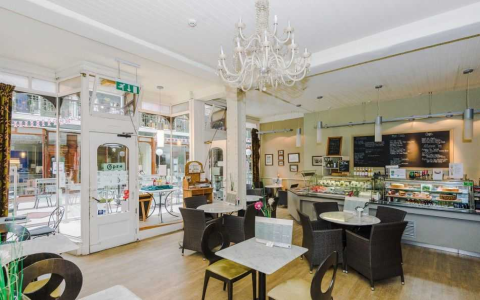Jambon de Paris: A Culinary Delight from the Heart of France
In the world of gastronomy, few items evoke the charm and sophistication of French cuisine quite like jambon de Paris. This exquisite ham, known for its delicate flavor and tender texture, is not just a staple in French households but also a symbol of culinary artistry. The story of jambon de Paris is one that intertwines tradition, culture, and the love of good food, making it a fascinating subject for exploration.

Originating from the bustling markets of Paris, jambon de Paris is a type of cooked ham that has been enjoyed for centuries. Its preparation involves a meticulous process that begins with selecting the finest cuts of pork, typically from the hind leg. The meat is then cured with a blend of salt and spices, often including pepper and nutmeg, which enhances its natural flavors. After curing, the ham is slowly cooked, allowing it to retain its moisture and tenderness. This careful attention to detail is what sets jambon de Paris apart from other types of ham.
One of the most appealing aspects of jambon de Paris is its versatility. It can be enjoyed in a variety of ways, making it a favorite among chefs and home cooks alike. Whether served as part of a charcuterie board, layered in a classic French sandwich, or incorporated into a savory quiche, this ham adds a touch of elegance to any dish. Its mild flavor profile complements a wide range of ingredients, from fresh baguettes to tangy mustard, making it a perfect addition to both simple and elaborate meals.
The cultural significance of jambon de Paris extends beyond its culinary uses. It represents a connection to French heritage and the art of charcuterie. In France, the preparation of cured meats is often seen as a craft, passed down through generations. Many families have their own recipes and techniques, which they cherish and uphold. This tradition not only preserves the flavors of the past but also fosters a sense of community and belonging among those who share a passion for food.
In recent years, there has been a growing interest in artisanal food products, and jambon de Paris has not been left behind. Many small producers are now focusing on traditional methods of preparation, emphasizing quality over quantity. This shift towards artisanal production has led to a resurgence in popularity, as consumers seek out authentic flavors and sustainable practices. The emphasis on local sourcing and humane treatment of animals has also become a priority for many producers, aligning with the values of modern consumers.
Pairing jambon de Paris with the right accompaniments can elevate the dining experience. A classic pairing is with a glass of French wine, such as a crisp white or a light red, which complements the ham’s flavors beautifully. Additionally, fresh seasonal vegetables, artisanal cheeses, and crusty bread can create a delightful spread that showcases the ham’s versatility. The combination of textures and flavors not only pleases the palate but also creates a visually appealing presentation.
As we delve deeper into the world of jambon de Paris, it becomes clear that this ham is more than just a food item; it is a representation of French culture and culinary excellence. Its rich history, combined with its adaptability in modern cuisine, ensures that jambon de Paris will continue to be a beloved delicacy for years to come. Whether enjoyed in a quaint Parisian café or at a family gathering, this ham brings people together, celebrating the joy of good food and shared experiences.
In the heart of France, jambon de Paris remains a testament to the artistry of cooking and the importance of tradition. Its enduring popularity is a reflection of the timeless appeal of French cuisine, where every bite tells a story of passion, craftsmanship, and the simple pleasure of savoring good food.



